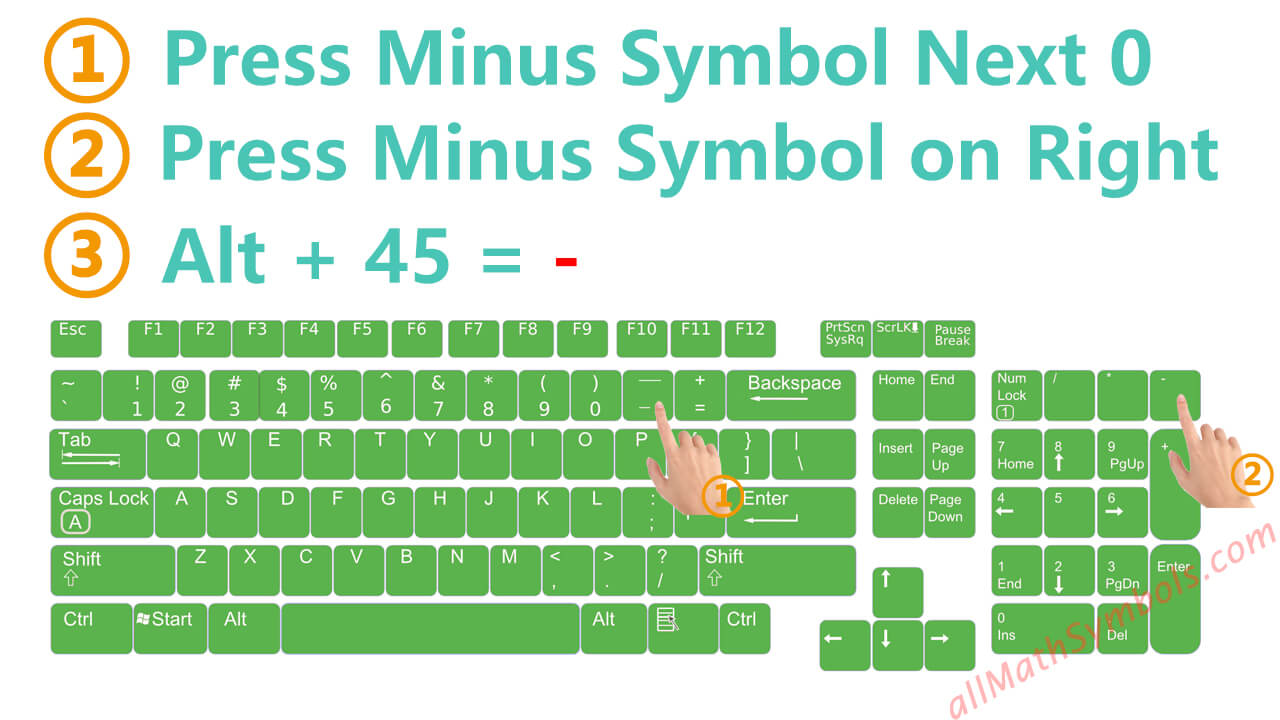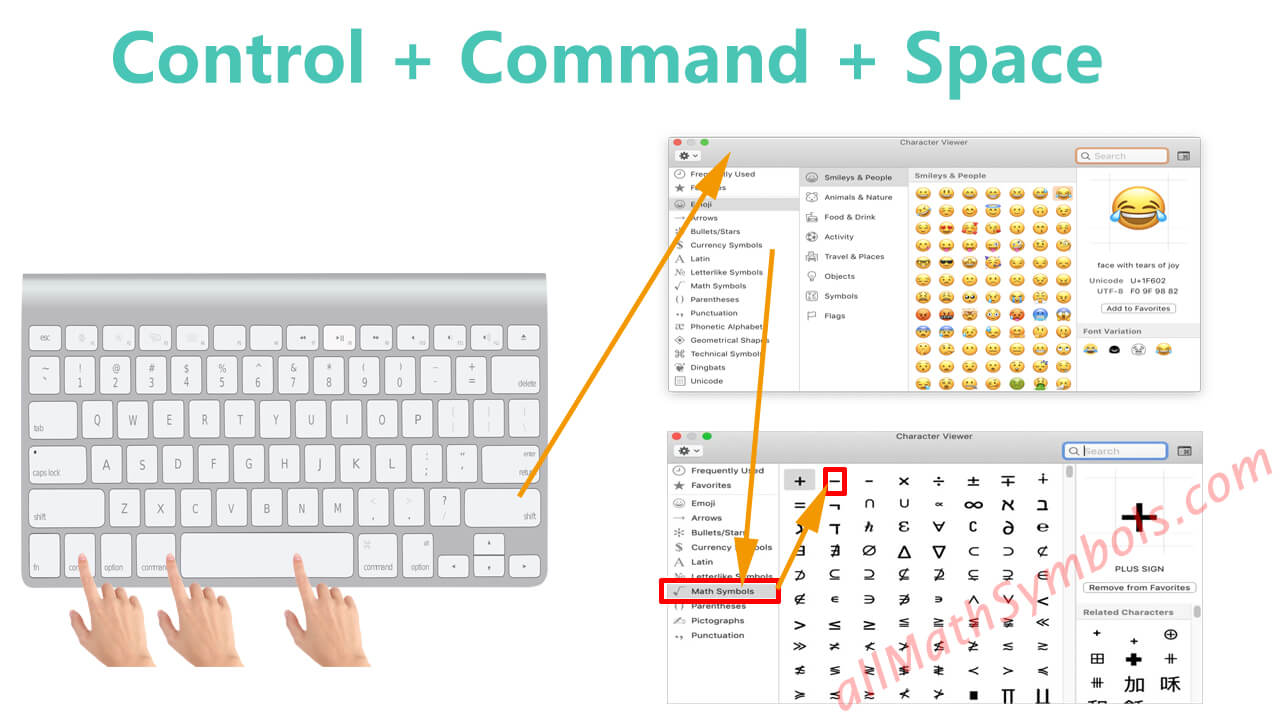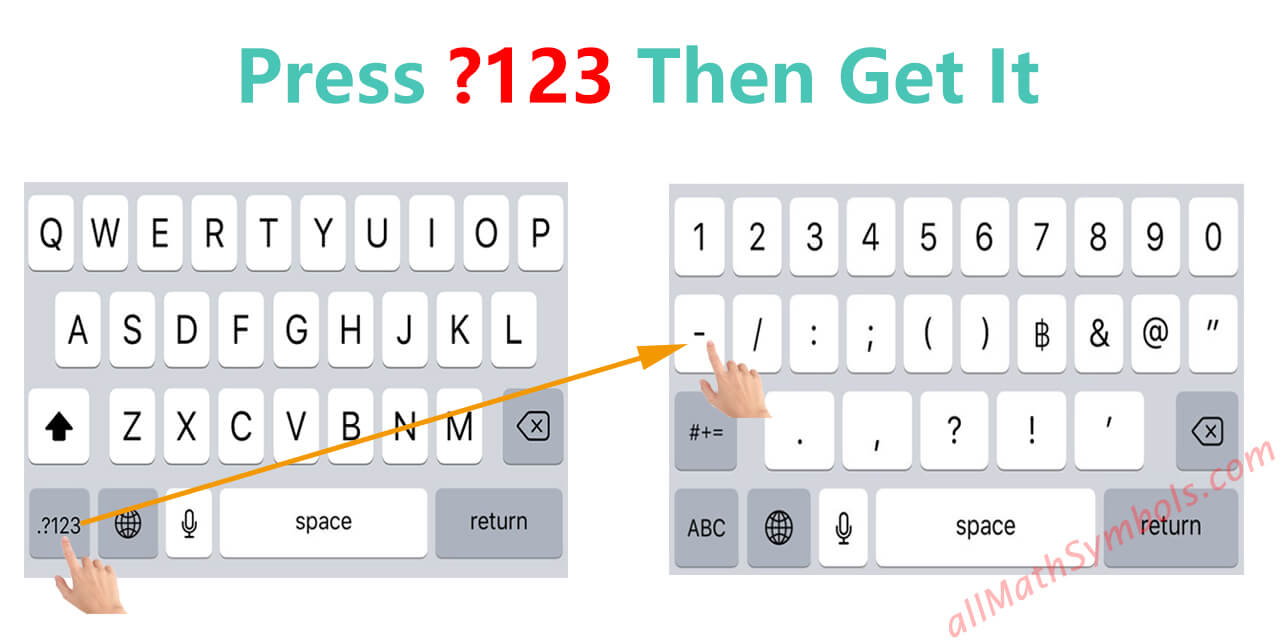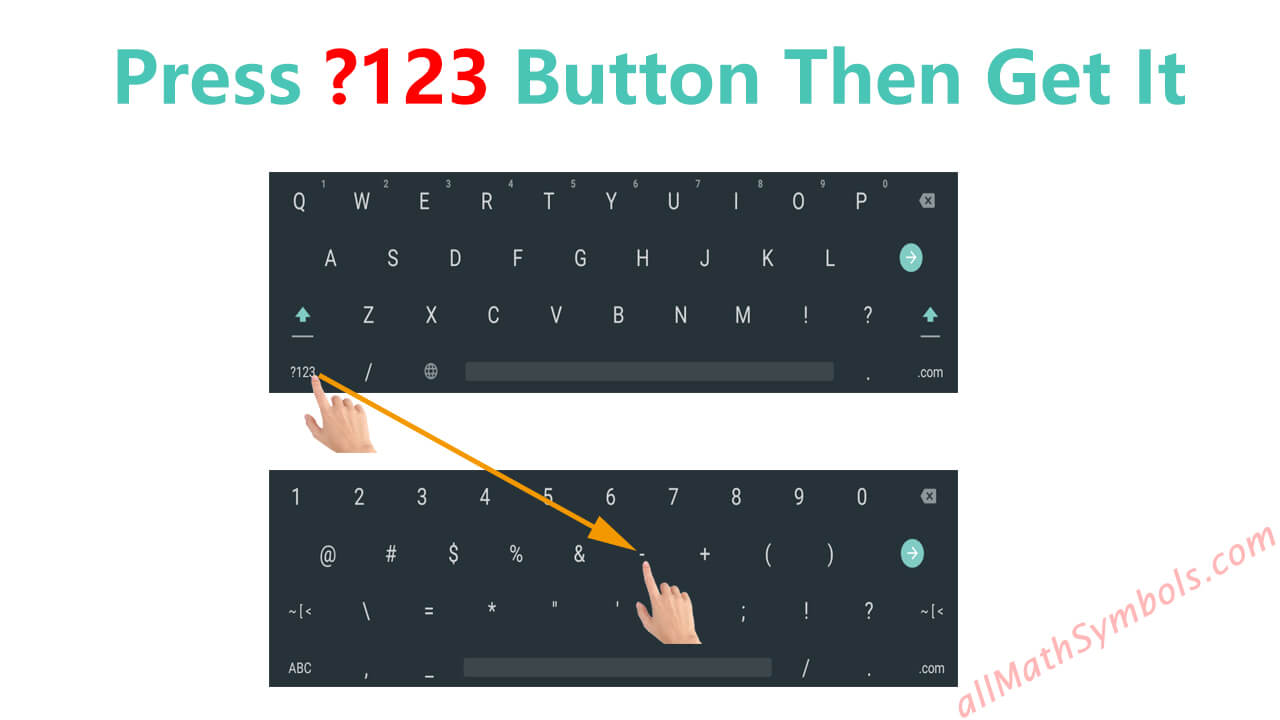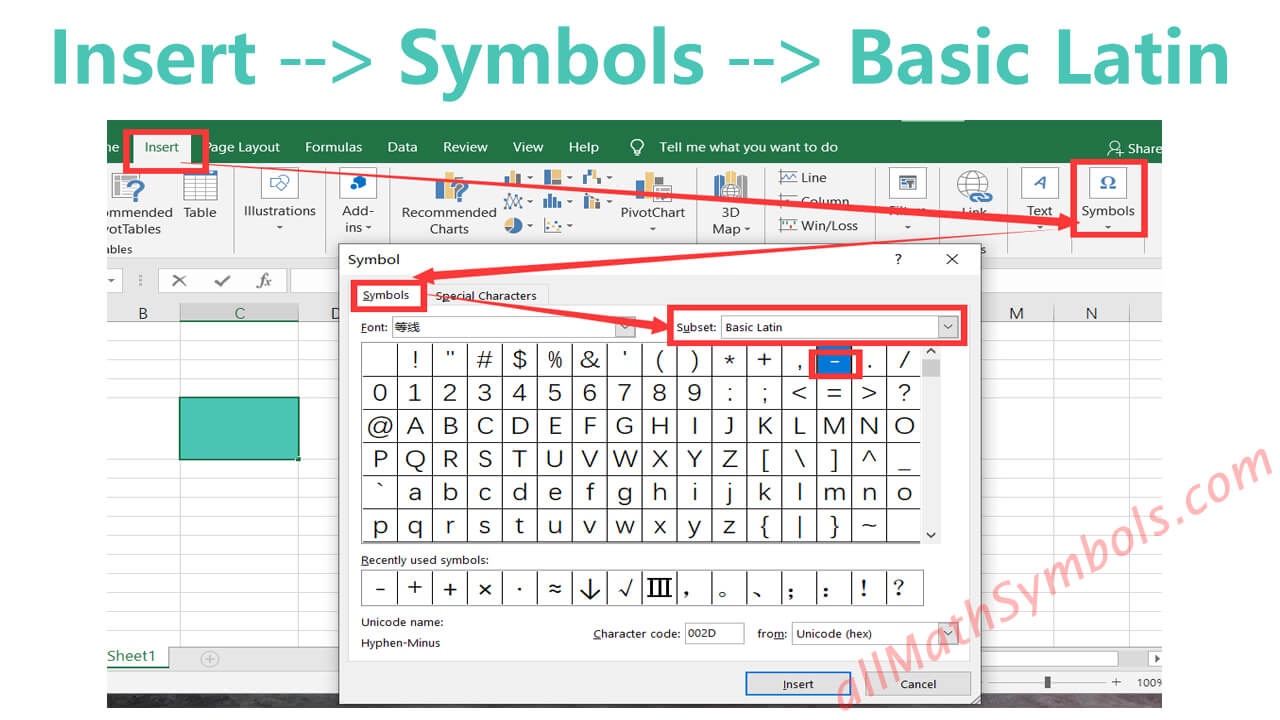Minus Symbol
Minus sign indicates that a number is less than zero. It also denotes subtraction. The number, which is less than zero is called a negative number. In typography, minus sign is used, instead of hyphen. There is hardly any difference between the minus sign and hyphen. But typographers, who are very careful, use the appropriate sign for hyphen and minus sign.
The word subtraction is obtained from 2 words "sub" and "tract". The word sub refers to below or under and the word tract refers to carry away or pull. Hence, subtraction means carrying away the number, from the lower one.
Subtraction is indicated by hyphen sign.
In Chemistry, minus sign is used to denote the property of rotating the polarised light in anticlockwise direction.
In Mathematics, minus sign, when placed between 2 numbers indicate that the 2nd number is to be subtracted from 1st number.
In Latin, minus refers to less.
History of Minus sign
The minus sign didn't have any origin since ages. Its origin is also not very clear. Few say minus sign was originated during the hieroglyphic or Alexandria ancestry. It is also known to be used by merchants, in order to detach the tare from the weighing of goods.
The initial use of minus sign was in the German manuscript of algebra, found in the Dresden library in 1481. During a similar period, minus and plus signs were found in Latin manuscript. Johannes Widman was the person who studied both manuscripts. Leizig, in 1489, published his first book (Mercantile Arithmetic) and had mentioned about minus signs. An unknown manuscript has also used the minus sign. It gave inputs for publishing 2 books, during 1518 and 1525.
During the initial period of 17th century, in Italy, the minus sign was used by Cavalieri, Christopher Clavius who was an astronaut and Gloriosi, the Mathematician. In English, the minus sign first appeared in a book named Whetstone of Witte, which was written by Robert Recorde.
The usage of minus sign was very confusing. Earlier in Swiss, Dutch and German books ÷ (presently it is the sign for division) sign was used for minus sign. In few books, in 17th century written by Descartes and Mersenne, 2 dots (..) or at times 3 dots (…) were used for subtraction.
Usage of Minus sign in various representations
In Mathematics, minus sign is used to represent multiple things. They are as follows:
- It is used to represent subtraction operation.
- It is used to indicate that the number is less than 0 (negative integers).
- It is used to represent Mathematical operations on negative integer numbers.
- It is used in temperatures.
- It is used to represent negative directions in graph papers.
Parts of Subtraction

There are 4 parts in Subtraction. They are Minuend, Subtrahend, Equals sign and Difference.
- Minuend - It indicates the first number, from which the 2nd number has to be taken away. For example, subtract 4 from 10. In Maths, it is written as 10 - 4 = 6. Here, the first number, which is 10 is called as Minuend.
- Subtrahend - It indicates the 2nd number, which is to taken away from the 1st number. In the above example, 4 are called as Subtrahend. In subtraction, there can be multiple subtrahends. It depends on the complexity of the equation.
- Equal Sign - It indicates that both sides correspond to the same value.
- Difference - It indicates to the result obtained after the subtraction process.
Properties of Subtraction
There are 4 properties of Subtraction. They are Associative, Identity, Commutative and Inverse.
Identity Property
This property states that number minus 0, would result in the number itself. For example, subtract 0 from 10, would result in 10. (10 - 0 = 10).
Inverse Operations
Addition and Subtraction process are usually opposite of each other. For example, in this equation 8 + 6 - 6 = 8, adding and subtracting the same number would actually cancel them.
Associative Property
This property is applicable to equations, where there are different types of braces, brackets and parenthesis. In this property, the braces can be moved anywhere in the group, without affecting the final result. However, this property is not applicable for Subtraction. For example, the final result of 8 - (2 - 7) is not same as (8 - 2) - 7.
Commutative Property
This property indicates that changing the position of numbers in an equation won't affect the final result. However, this property is also not applicable for Subtraction. For example, The final result of (5 - 1 = 4) is not equal to the final result of (1 - 5 = -4).
How to perform subtraction?
By using a number line, subtraction process can be carried out. This is just same as Addition. The only difference is in Addition, the order of numbers to be added don't play a vital role. But in case of Subtraction, the order of numbers to be subtracted plays a very vital role.
Following are various methods to perform Subtraction:
1. Simple Subtraction on line numbers
Below is the example:
If Nancy has 10 sweets and Lucy has 4 sweets, what is the difference?
As per the example, start counting from small number (4) and then count till the big number (10).
5 (1), 6(2), 7(3), 8(4), 9(5), 10(6).
Hence the difference is 10 - 4 = 6

2. Borrowing in Subtraction
In complex cases, it is not possible to count, so the numbers are to be written column-wise, one above the other.
A hawker has earned Rs. 450 per day. He has spent Rs. 70 to buy groceries. How much money is the hawker left with, after buying the grocery?
The numbers are written column-wise and in correct order:

In the above example, since 5 is smaller than 7, 1 has to be borrowed from 4. Hence 4 becomes 3 and 5 becomes 15.
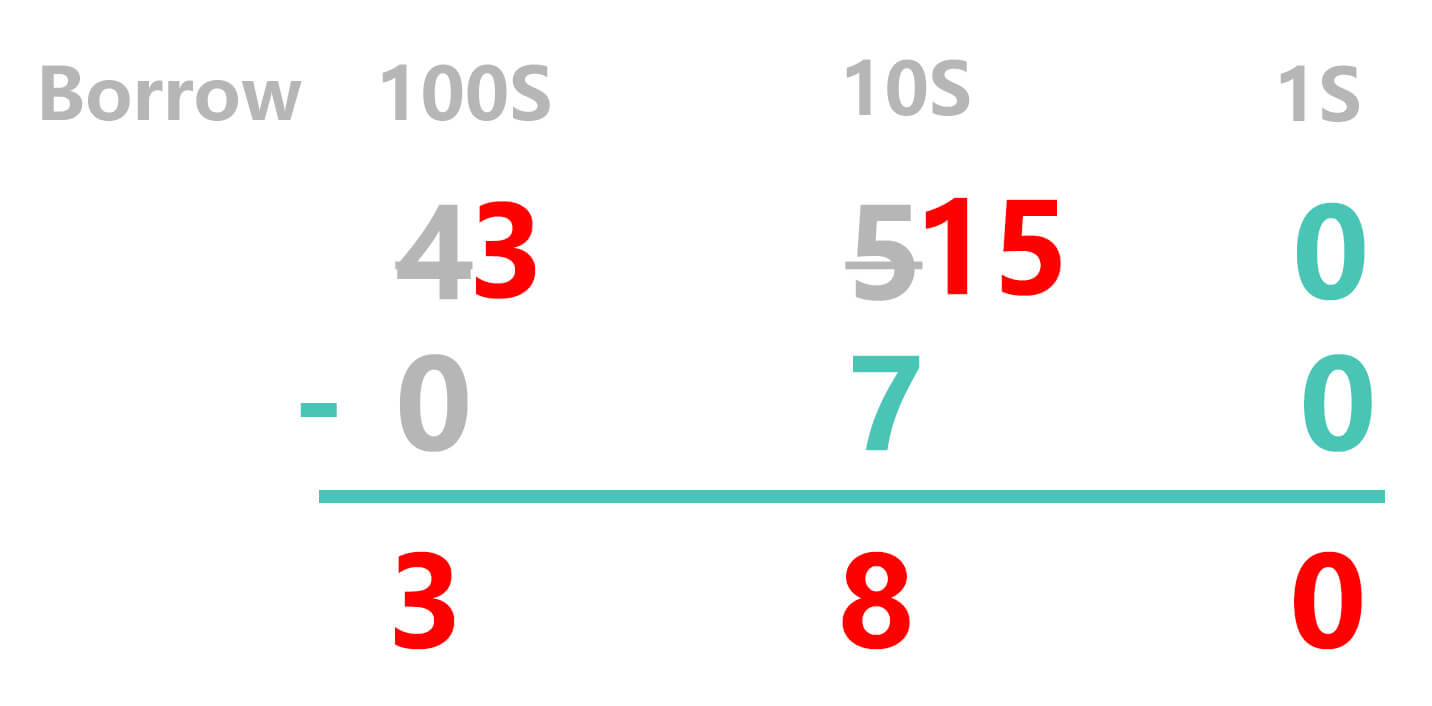
3. Borrowing can be repeated in Subtraction process
Example: subtract 1001, 999. Arrange the numbers column wise.
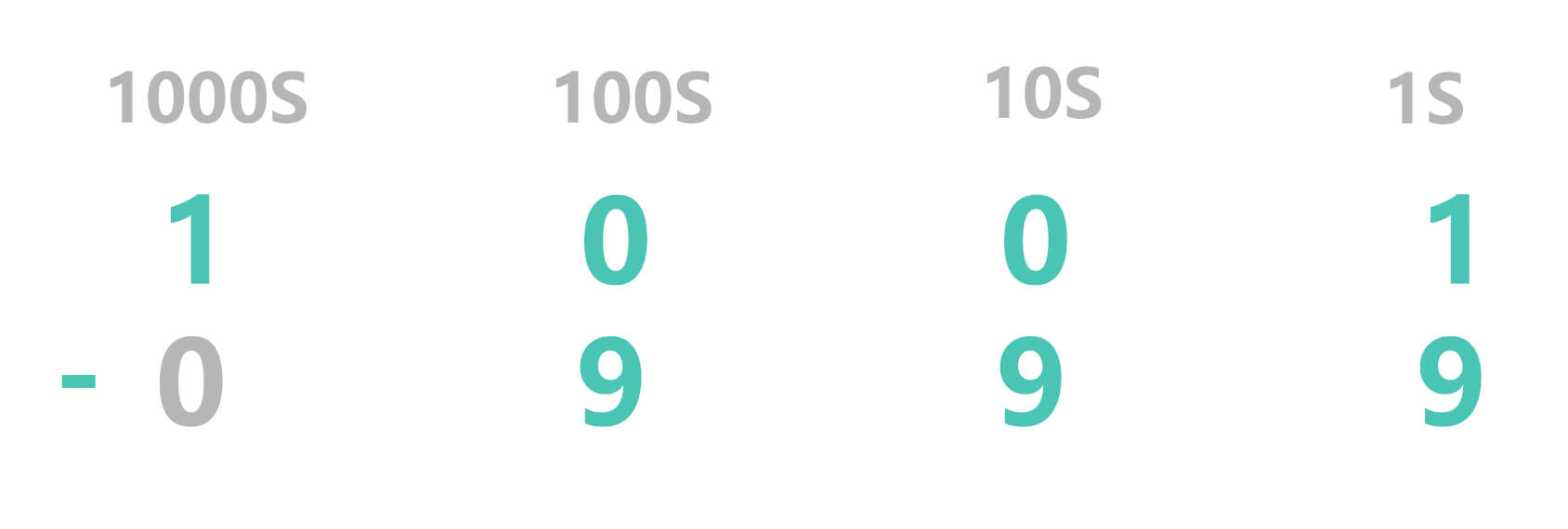
Starting from right side, 1 is less than 9, we need to borrow from the next number which is 0 (10s). Even the 100s number is also 0. So we need to borrow from 1000s number, which is 1.
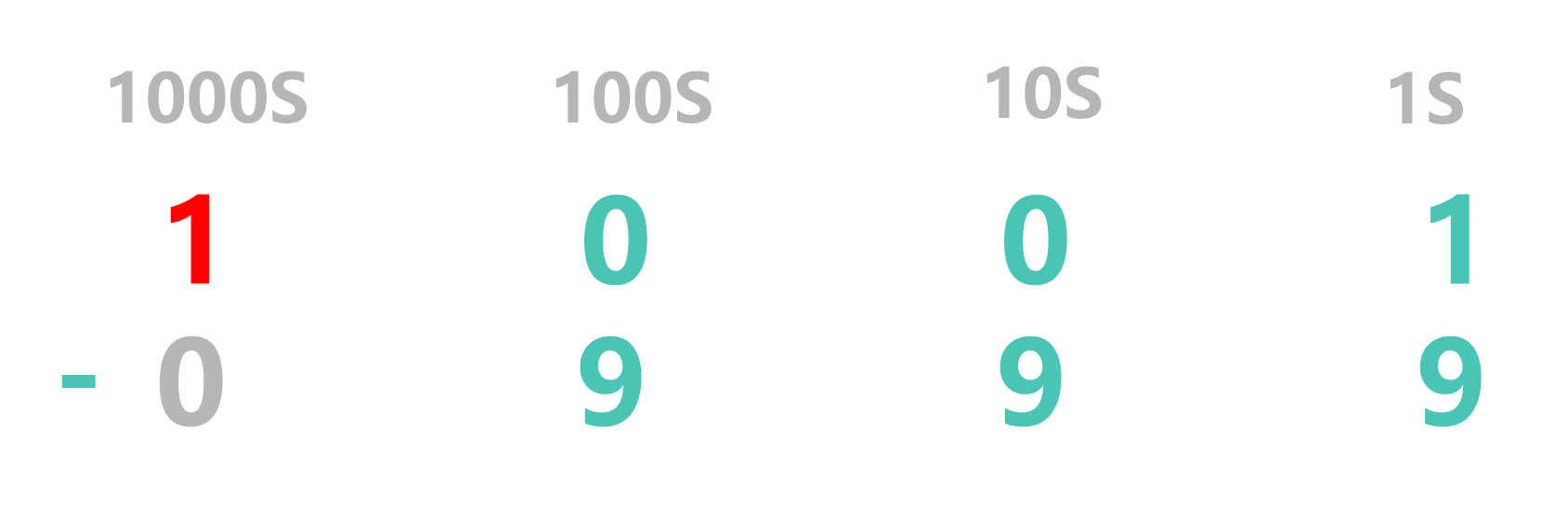
The borrowing of number has to be done step by step. Since a number has to be borrowed from 1000s, so strike 1 and add 1 to 100s. So 100s number becomes 10.
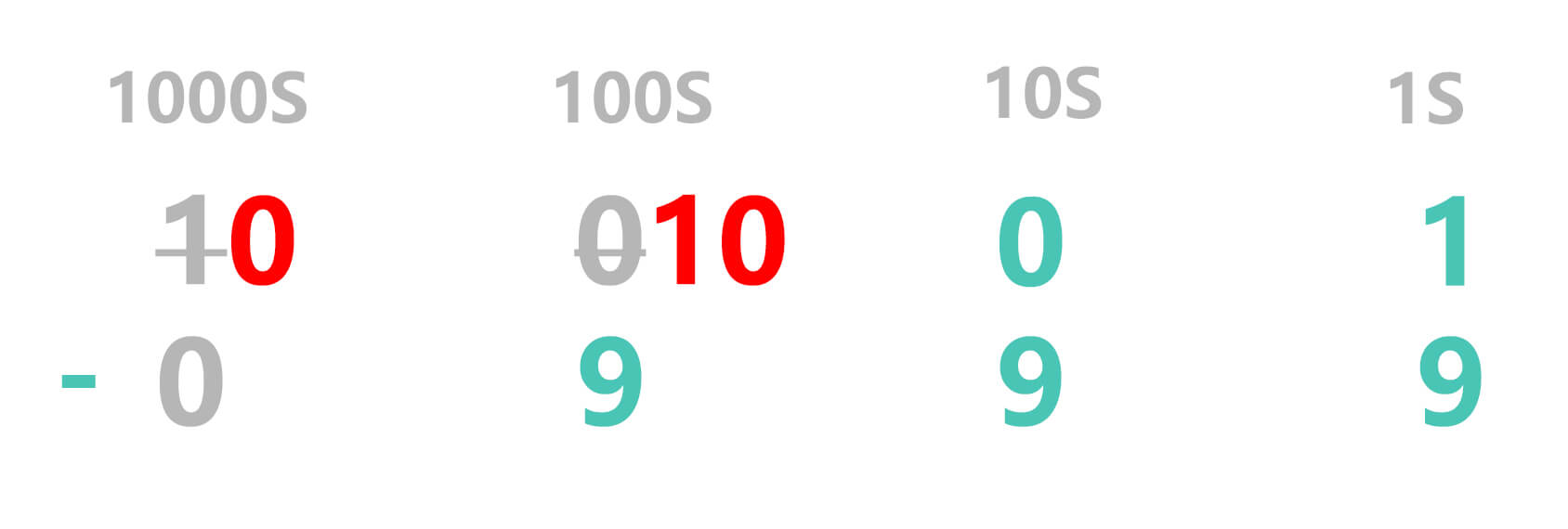
A number has to be borrowed from 100s, as 10s number has 0. So 100s number becomes 9 and 10s number becomes 10.
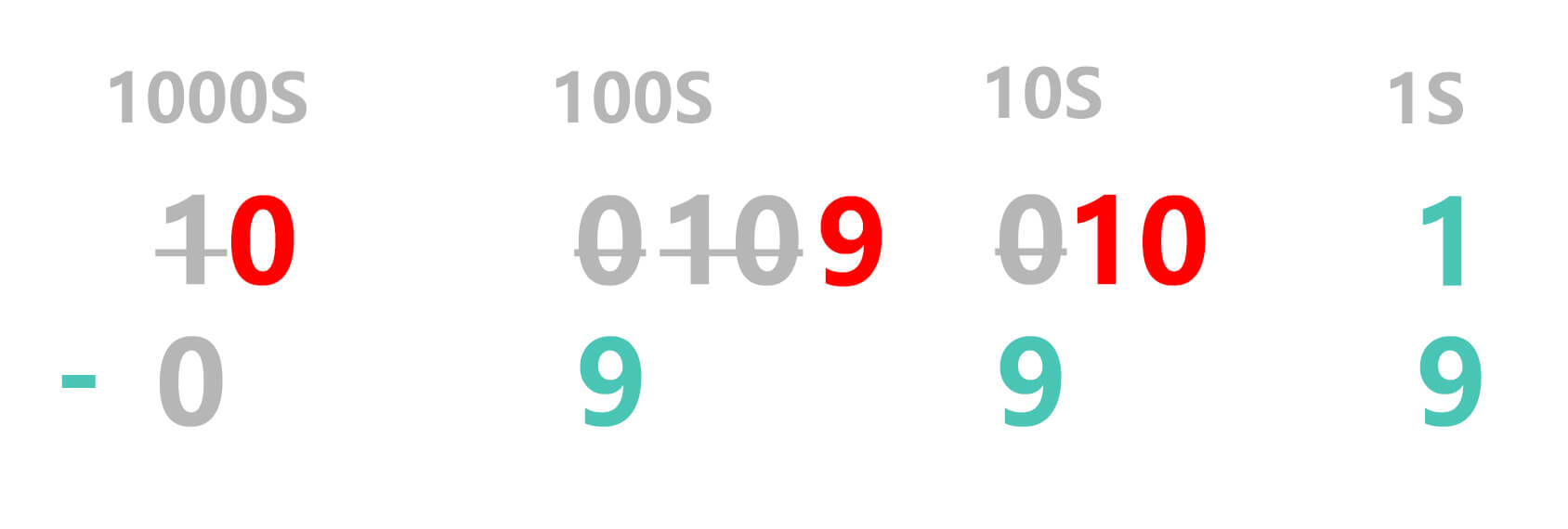
1s number has to borrow a number from 10s. So 10s number becomes 9 and 1s number becomes 11. Since the entire column wise numbers are now in proper shape to be subtracted, perform the operation.
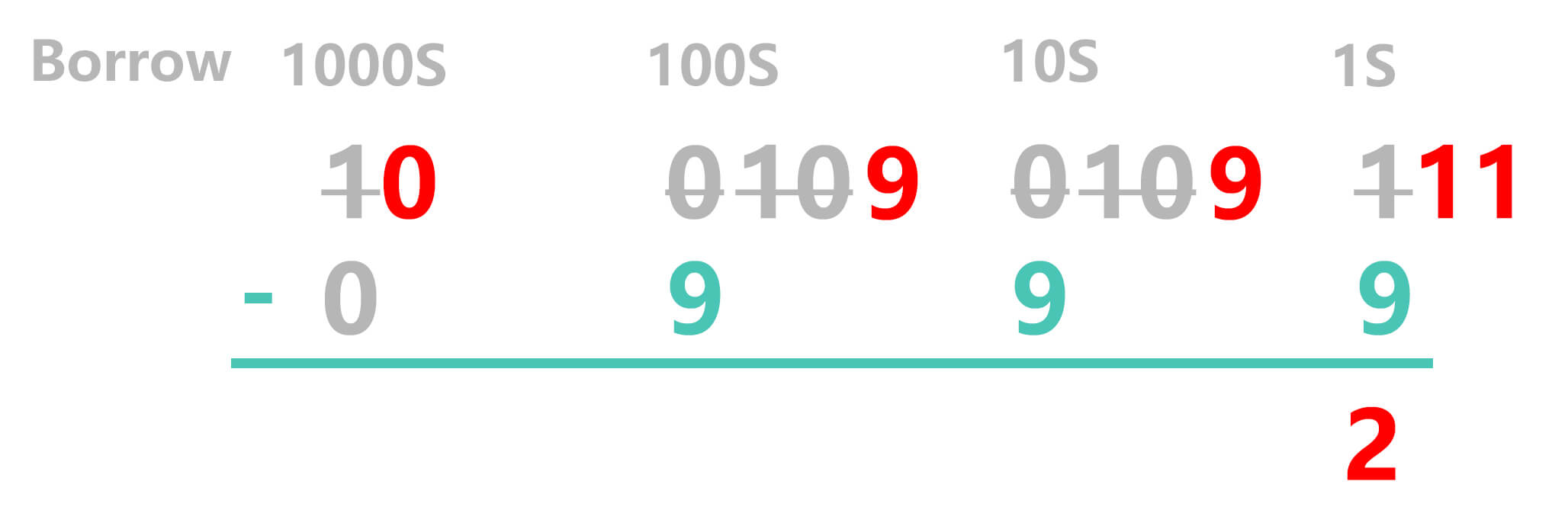
The final answer is 2.
Subtracting in special cases: negative numbers and 0
- When identical numbers are to be subtracted, the answer would always be 0. Example, 5 - 5 = 0.
- When 0 is subtracted from any number, the answer is always the number itself. Example, 20 - 0 = 20.
- When any positive number is subtracted from 0, the answer is always negative number. Example, 0 - 15 = -15.
- When a positive number is subtracted from a negative number, addition process to be carried but retaining the negative sign. Example, -5 - 7 = -12.
- When a negative number is subtracted from a positive number, addition process to be carried but the final answer would be positive. Example, 8 - (-1) = 9.
- The thumb rule is 2 negatives make a positive. Subtracting a negative number will always result in addition process.
How to Type a Minus Sign
Nowadays, calculations can be performed in almost all devices for ease. Following are the steps to be performed, to type minus sign on various devices:
Code of Minus Sign
| Unicode | U+02212 | |
|---|---|---|
| Alt Code | Alt 45 | |
| ASCII Code | 45 | |
| Hex Code | − | |
| HTML Code | − | |
| CSS Code | \2212 | |
| HTML Entity | − |
Variants of minus sign
Minus sign can be interpreted in a number of ways. Contrary to the usual convention of deducting a number through minus sign, it has other features also that are used in a number of applications. Following are the list of variants of subtraction.
- Minus symbol before a number (-): A number which is preceded with a minus sign is called a negative number. Negative numbers are always less than 0. Example, -10, -8.
- Plus minus sign (±): In Mathematics, this sign indicates that there are 2 operations which can be performed - Addition or Subtraction. This sign also indicates the range in some cases. For example, ±10. It means a field can accept values starting from -10 to +10.
- Double minus sign (--): 2 minus sign usually cancel out and it becomes a plus sign. When 2 negative numbers are multiplied, the minus sign cancel out and the result would have a plus sign.
- Hyphen sign (-): It is a punctuation mark which is used in joining 2 words. It is also known as minus sign or dash, negative or subtract.
Tips and Tricks while performing Subtraction process
Listed below are few tips and tricks which should be kept in mind while performing the subtraction process.
The number can be divided to remove the subtrahend. Below is the example.
Subtract 26 from 100. This can be written as 100 - 26. 26 can be divided as 20 + 6. By dividing the number, the subtraction can be carried out easily. Lets subtract one by one.
100 - 20 = 80
80 - 6 = 74
The final answer is 74.
Subtraction method can be changed to addition and vice versa.
If 0 is subtracted from a number, the final answer (difference) is the number itself.
When 1 is subtracted from a number, the final answer (difference) would be the predecessor of that number.
2 negative makes a positive. Subtracting a negative number would always result in addition process.
